Urban Futures
Lessons from Lockdown

Foreword
Covid-19 has dramatically changed our urban landscapes. How we work, move and socialise has been sharply disrupted, as the world outside our doorstop has been forced to adapt and change to quell the most harmful effects of the pandemic.
Modern cities, however, were not designed to cope in this way. As we begin to emerge from the depths of lockdown, and more and more people are encouraged to return to work, urban centres are facing an increasing pressure to make life safe once again.
This transition presents unprecedented challenges. How we can coexist with coronavirus depends heavily on how we can stunt its volatility. However, it also proposes huge opportunities: a chance to reimagine and build more resilient, accessible and sustainable urban communities.
This is a collection of articles from researchers across The University of Manchester. Each article makes a series of recommendations as to how policymakers can seize this chance to transform urban futures for the better.

The future of urban mobility
By Michael Hodson and Andrew McMeekin

COVID-19 has comprehensively disrupted urban mobility systems. Public transport authorities are running skeleton services, while streets are less congested. In the midst of lockdown conditions, urban mobility systems look unrecognisable. Here, Dr Mike Hodson and Professor Andrew McMeekin reflect on how different areas have responded to the lockdown, and discuss key considerations that will shape post-pandemic transport.
Pre-COVID urban mobility
Our work on Greater Manchester’s existing transport system revealed long-standing challenges that are shared by many urban areas: over-dependence on cars, congestion at peak times, a privatised and fragmented public transport system of highly uneven and often very expensive (especially compared to London) provision, air pollution hotspots, unsustainable carbon emissions, and investment on infrastructure that focused on the city centre and strategically prioritised connections within the wider metropolitan area.
However, in the context of devolution, we have seen some progressive changes, including ambitious plans announced for a major new cycling and walking infrastructure and proposals for taking bus provision under municipal regulatory control. These developments were starting to address our call for a focus on the travel needs of all citizens, delivered under new governance arrangements of ‘civic futures’.
New, disruptive digital innovations have also reconfigured urban mobility systems. In pre-COVID transport systems, digital platform technologies – from the ride-hailing platform, Uber, to the mapping platform, Citymapper – were being experimented with by both private investors and via a renewed civic politics.
The challenge for existing forms of urban public transport, and for imagining the future role of digital platforms in urban mobility, is that they are predicated on mass, shared usage. Social distancing and lockdown, in the short-term, fundamentally challenges principles of shared ridership and shared usage and has stimulated a variety of responses.
Urban transport during the lockdown
Despite widespread disruption under lockdown conditions, a range of initiatives in different urban areas have been emerging that are starting to reimagine the fabric of urban transport. At the same time, evidence has been emerging about how empty streets during lockdown led to improved air quality and lower carbon dioxide emissions, renewing public debate about what future low-pollution, low-carbon urban mobility should look like.
It is within this context that cities have introduced new mobility initiatives: Milan has introduced measures to reduce car use and turn over 35km of city streets to cyclists and pedestrians; France has made €20million available for citizens to service bicycles to promote cycling, and Manchester has announced the pedestrianisation of Deansgate, one of its major thoroughfares. Greater engagement through various networks, such as the C40 group, has allowed cities to learn from each other. These networks should be developed to enable further sharing of key lessons.
Platform-based mobility providers have also been adapting, introducing in-vehicle segregation and no-contact deliveries. Also, in a new partnership with the World Economic Forum, German start-up Wunder Mobility has launched #WeAllMove, an open digital platform that connects essential services with mobility providers.
Similar open digital platforms could serve as a model for UK policymakers as lockdown restrictions are eased, but the need for distancing remains.
Some lockdown interventions – eg ‘temporary’ widening of cycle lanes – have been introduced as sticking plasters to cope with current circumstances. But as people start to appreciate and experience them as the new normal, they may become permanent. On the other hand, some interventions, such as Paris mayor, Anne Hidalgo’s, plans for a more self-sufficient ‘15-Minute City’, have been much more openly directed towards experimenting for long-term change, with the lockdown seen as an opportunity to create more sustainable and effective mobility systems for the future.
Social distancing has meant the ‘sharing’ envisaged by ride-hailing companies has become problematic. This has created pressure to repurpose digital platforms for an era of social distancing. To do this effectively will require building new relationships between policymakers and platform expertise. This will be needed to develop mobility apps for processes of contact tracing and social distancing, which will likely become fundamental to monitoring and controlling urban movement.
With many nations easing lockdown measures, a key concern is how to get people moving in dense urban areas while maintaining social distancing measures. This risks favouring private cars over public transport. It also poses questions about which of these experimental interventions will solidify, which will be exposed as temporary and what this ultimately means for the organisation of urban transport systems.
Beyond COVID?
The lack of a vaccine means we don’t know when we will be ‘beyond COVID’, and predicting what urban mobility will look like is inevitably even more speculative than regular future gazing.
That said, current responses and interventions give us some clues. The reclaiming of streets for active travel in the absence of cars may become sufficiently popular to persist, especially in city centres. The end of rush hours could be facilitated by collective discussions about more genuinely flexible working patterns. This could involve solidifying home working and staggered commute times.
On the other hand, disruption to public transport, which is not well suited to social distancing, seems likely to continue for some time. In the period before buses, trains and trams return to full-scale operation, private mobility platforms may seize opportunities to fill the vacuum.
Policymakers must robustly protect the public interest over the possibilities for short-term profits for narrow social interests.
How this plays out is likely to be shaped by how the wider political and economic conditions of a post-COVID world shape future urban transport systems. The crisis has required a renewed reliance on a state that intervenes more deeply in the organisation of economic life and in securing the health of its citizens. A key question is whether this more interventionist state will be confined to responding to the immediate crisis before bouncing back to ‘business-as-usual’ or whether we are seeing the foundations of deep institutional and structural change? The answer likely rests on a combination of what the length, depth and scope of the COVID-19 crisis is, including the length of a global economic downturn, and the range of societally feasible political and experimental ideas that are available to draw on.
The fallout from COVID-19 is likely to intensify this political-economic struggle between the private investment opportunities provided by digital platforms in urban centres, and a new civic politics of digitally delivered provision that seeks to use platforms to bolster collective priorities via existing urban transport systems. How they are rebuilt, with which combinations of transport mode and under what arrangements of ownership and control, will shape the sustainability, resilience and effectiveness of future urban mobility systems.
Originally published 12 June 2020
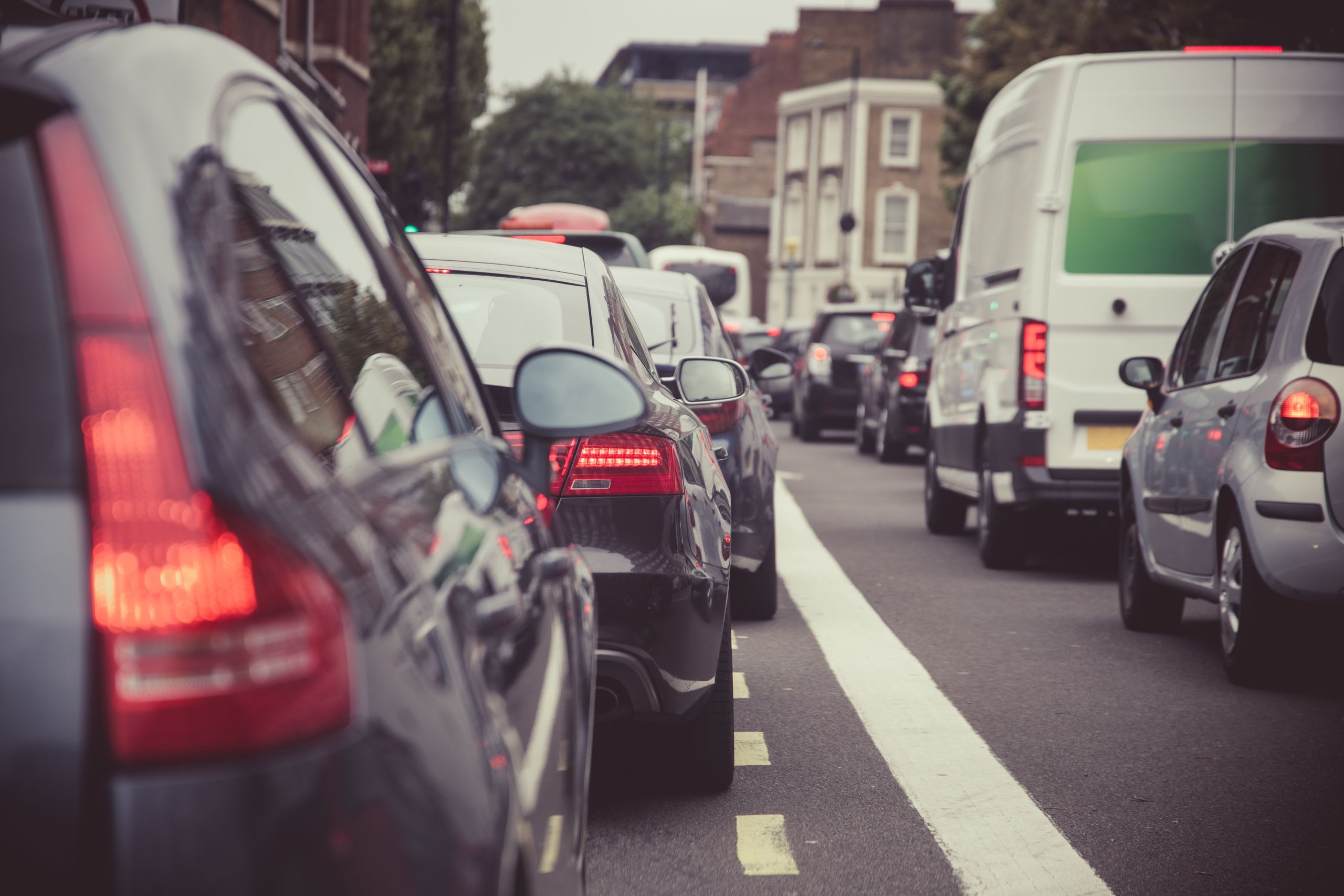


Building back a gender balanced better – devolution, growth and equalities
Professor Francesca Gains

As the initial period of lockdown is slowly relaxed, the policy agenda in all parts of the UK is turning to examine recovery from the economic devastation caused by the pandemic. Policymakers in our major city regions are considering how to start up and stimulate economic activity where safe to do so; help firms and employers transition to new ways of working; and deal with the inevitable growth in unemployment that will flow from recession. Here, Francesca Gains, Professor of Public Policy, discusses the need to consider gender equality when making decisions on how to build back better.
As well as these urgent economic agendas, there is also a desire to learn from the disruption of the pandemic – to think about how to ‘build back better’. To capitalise on the social and environmental benefits that lockdown revealed: strong community and neighbourly support, less traffic and pollution, less time commuting and the potential for more time for parents to share responsibility for childcare.
Fairness and equalities
The lockdown also highlighted the following issues around fairness and equalities, moving these agendas to the top of political and public awareness and debate:
· The higher risks of being affected by the serious symptoms of COVID-19 faced by men and Black and minority ethnic (BAME) communities;
· The concern for (predominantly) women and children living with domestic violence;
· The higher risks of exposure to infection faced by key workers in certain occupations, such as low paid and mainly female care workers;
· The imbalanced unpaid care done within households by fathers and mothers;
· That women are more likely to be in a job that can be done from home with consequent risks to their productivity due to increased childcare and homework duties;
· The greater risks of redundancy following furlough in sectors like retail and hospitality which have a largely female workforce.
This awareness provides a rare opportunity to get equalities policymaking on the agenda. Too often equalities is side-lined unless an economic case can be made. The current circumstances provide this strong economic incentive to build back better especially in devolved areas. Combined authorities headed by a mayor have a vital role in stimulating and coordinating economic growth through their local industrial strategies, skills investment and employment support as well as through enabling integrated public transport. Mayors can be a vital voice for the city regions, working with local authorities, anchor institutions and stakeholders helping to coordinate, target and stimulate growth. But a focus on equalities data on employment will be important in understanding how to target policy to get productivity gains.
Gender and the loss of productivity in the labour market
On Gender, produced for the Greater Manchester Combined Authority Women’s Voices Task Group in 2019, illustrates how the labour market is occupationally segregated, with women being hugely over-represented in low-paid, insecure caring and administrative sectors, leisure, and retail; and men over represented in the manufacturing, construction, engineering, technical and managerial sectors. This picture is replicated in all combined authorities.
Figure 1. The occupational disparities within the female labour market across Combined Authorities are stark
When the gender differences in labour market participation are examined in Greater Manchester and elsewhere it is clear how women get squeezed out of full-time employment during the years of childrearing and childcare. Analysis shows that the risk of economic inactivity is an intersectional one where BAME women face an even higher likelihood of part-time working or unemployment. A lack of affordable childcare and problems with transport are seen as vital in helping women balance work and care.
The evidence in On Gender shows how the gender differences in employment, occupation and labour market participation are exacerbated during child-bearing years and feed through into gender pay gaps; and greater income insecurity in older age for women with potential consequences for wellbeing and the need for social care.
Having a gendered lens to policymaking is essential to understand how these inequalities build over the lifecycle and how to tackle these issues. For example:
· To address gendered educational choices and build gender targets into skills strategies to support construction and digital skills pathways to encourage girls and to enter occupational sectors where they are underrepresented;
· To work with employers in sectors where future innovation and growth is expected, such as the IT sector, to tackle working practices and expectations which make progression at work difficult to combine with family life;
· To promote the adoption of the voluntary living wage for low-paid workers such as those in the care sector;
· To support the development of vital childcare and transport infrastructure to help skilled female workers manage work and care.
Ensuring building back better involves building back fairer
As the agenda to ‘build back better’ develops, understanding the data on gender and inequalities in the new devolved mayoral authorities will be even more vital on economic grounds to avoid further entrenching occupational segregation. Without deliberate action to ameliorate job losses in sectors where women predominate, realise productivity gains and unlock talent by keeping women in the workforce the impact of the pandemic risks exacerbating gender inequalities.
On social and fairness grounds, Greater Manchester with its health and social care devolution responsibilities will need to work with Government, local authorities and providers to address the problem of social care funding. The vital work provided by low paid and precarious social care workers should be valued. Addressing precarious work is not just important for fairness, but also will support the foundational economy, ensuring the underpinning exchange of goods and services within very local areas.
And the role of combined authorities in supporting (when safe to do so) better public transport, walking and cycling will help achieve some of the environmental potential lockdown revealed. Supporting changing working patterns with less commuting and more working from home can be harnessed to support a balance of work and care in households helping fathers to be more involved in child care.
Now more than ever combined authorities are absolutely critical in tackling some of these pressing, cross-cutting agendas on economic, social and fairness grounds. With the budgets and decisions devolved to combined authorities the equalities agenda is key to helping with recovery.
Originally published 11 June 2020
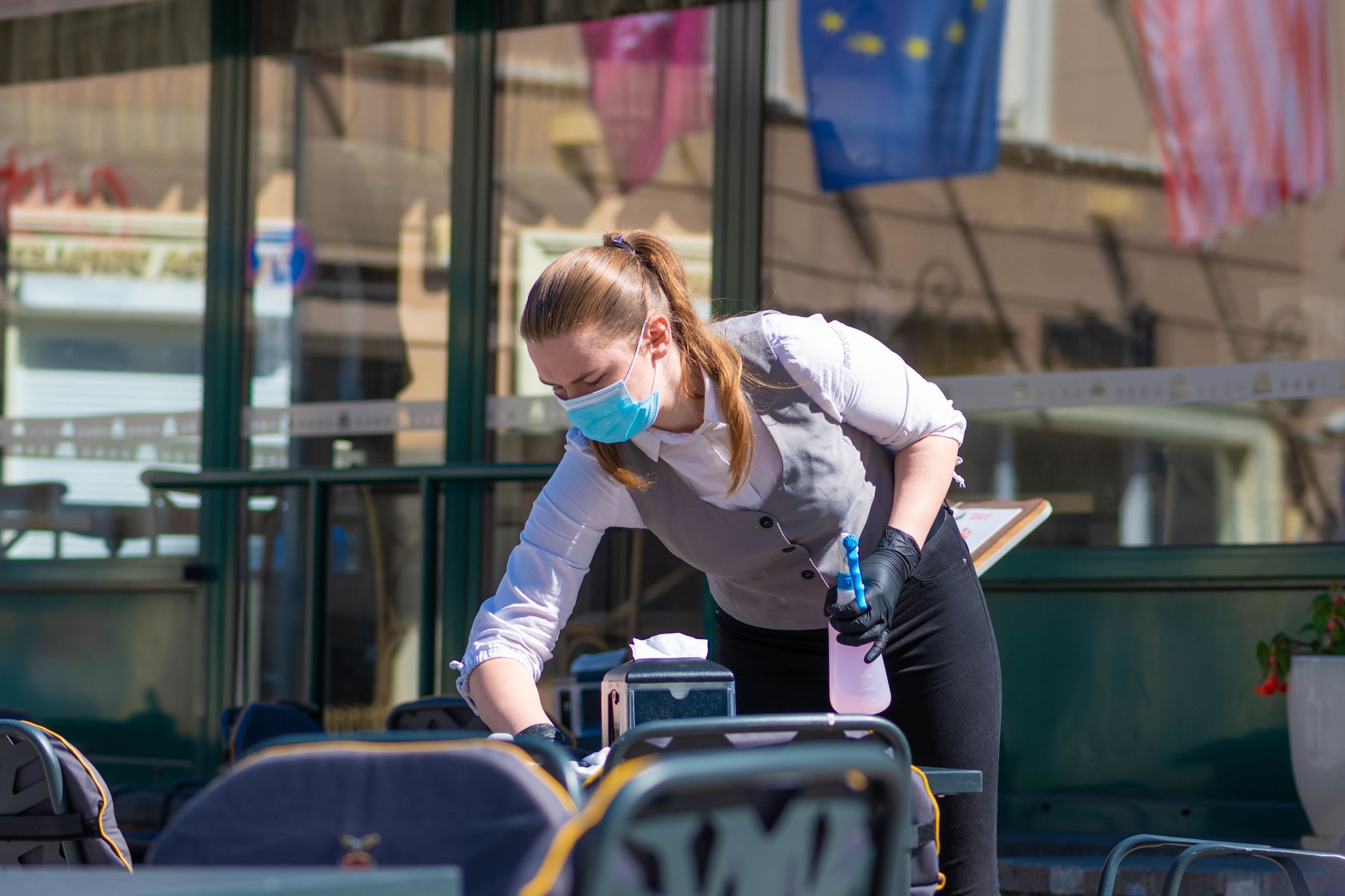


Build in haste, repent at leisure? Post-pandemic planning at the precipice
Professor Ian White, Professor Graham Haughton and Dr Nuno Pinto

The COVID-19 pandemic has led to discussions on what shape planning should take post-crisis. Here, Prof Iain White, Prof Graham Haughton, and Dr Nuno Pinto outline how current regulations have exacerbated difficulties for some people in lockdown, discuss how opportunistic developers or politicians may seek to hijack the policy responses, and suggest solutions to ensure the post-pandemic recovery is beneficial for all.
A wide-ranging discussion on the implications of the COVID-19 pandemic by city mayors, academics, and others, has evoked new ideas on how we live and move, and on how to transition economies to be greener and cleaner. Despite such good intentions, as the dust settles, we run the risk of returning to ‘business as usual’ and we are already seeing much new thinking side-lined, alongside a reversion to familiar narratives of ‘speed’ or ‘red-tape’. We must be cautious about altering the planning system so it can do the wrong thing more efficiently.
The cost of fast-tracking infrastructure
Under pressure for quick results, there are signs that some governments seek to short-circuit the planning system in order to expedite development. For instance, the mooted ‘shovel-ready’ infrastructure stimulus in New Zealand aims to create a fast-track process, where politicians select projects and there is no opportunity for citizen involvement. Significantly, the Minister in charge said that there should be a high level of certainty that consent is given. Meanwhile, Australia’s version of ‘fast-tracking infrastructure’ sees a call not just to cut ‘red-tape’ but ‘green-tape’ too—that is, environmental regulations. In the UK, the Transport Secretary recently used the term ‘bureaucratic bindweed’ to describe rules in the current system that presumably need to be eliminated.
During the current pandemic, English local authorities were initially forced to abandon their planning committees, instead giving greater powers to officials, sometimes aided by senior local politicians, to decide on major, occasionally contentious, projects. Requirements to publicise site notices have been relaxed in England, while the Housing Secretary has announced that instead of traditional methods, local councils and developers can use social media to publicise applications to ‘unblock’ planning. This is bad news for those without social media or access to technology or data, discriminating particularly against the elderly and the most vulnerable. While some local authorities in England have now adopted virtual planning committees, many have been slow to introduce them.
Under these relaxed measures, opportunistic developers may have been emboldened by relaxed planning requirements to bring forward proposals that are likely to be locally contested, hoping this might improve their chances of slipping projects through.
We structure our discussion about improving the processes of planning under three headings: better planning before, during, and after future pandemics.
Better planning anticipating pandemics
Having now experienced social distancing and lockdown, and with the prospect of a pandemic a recurring possibility, planners need to prioritise actions that better prepare for the implications. It is clear we need better provision of both private and public space. Homes need to be built to higher standards. Under current English regulations – as a recent case in Watford revealed – it is possible to build homes without windows, a decision upheld by the planning inspectorate, against the objections of local planners and politicians. Imagine an elderly or vulnerable resident being locked-down inside such a development.
Fortunately, the considerable public outcry, media attention and political opposition appears to have seen the developer reconsider the scheme. This only goes to show the importance of proper local scrutiny of development proposals. The problem here is that the English planning system no longer does this in all cases, and fast-tracking may give more power to developers. Rather than give away more permitted development rights, we should be looking to limit them, restoring local democratic scrutiny and the rights of local residents and citizens.
Better planning during pandemics
Local authorities need clear plans in place for how planning decisions will be made in any future lockdown or enforced social distancing. Major projects must not be waved through under emergency rules, and predatory developers wishing to exploit any perceived relaxation in planning approvals need to be discouraged, perhaps by removing their right to appeal any planning decisions taken under lockdown and instead giving the public the right to appeal.
In terms of planning to exit a future pandemic-related recession, rather than relying on large scale mega-projects ushered through without adequate political scrutiny and public consultation, there is much to be said for encouraging smaller projects that emerge out of local consultation and that are open to robust challenge under effective local planning systems.
Local projects might be slightly slower to be approved, but much quicker to build than, for instance large-scale road projects. They also tend to be better fitted to the nature of places that they occur in and jobs more likely to be local.
Better planning processes, fit for rebuilding the post-pandemic world
Considering how the public expectations of transparency and fairness have been raised during the pandemic, we should also expect citizens to question the politicians who use expert advice to deflect, blame or limit meaningful opportunities for public engagement.
Over the past decade, in England and elsewhere, planning systems have been loaded in favour of developers and their advisors and against local communities. Backing up this state of affairs has been growing recourse to poorly specified technical processes which serve to bamboozle and outmanoeuvre the public.
The planning system needs to be reset, so that the language and techniques of planners, developers, and consultants are intelligible, transparent and favour honest communication between politicians, stakeholders and the public. The fear is that in the rush to rebuild, the bigger projects that are being politically favoured, tend to be complex and technical, and if they are rushed through, there will be even less space for better processes.
Conclusion
Rather than build in haste and repent at leisure, we need to think deeply about how the planning system can be repurposed to suit the emerging challenges for cities, not least in relation to the once-in-a-generation investment and the revised expectations from the public around transparency and fairness. Planning, like policing, is at its best when it works on the basis of consent–attempts to reduce opportunities for scrutiny, challenge and dissent threaten the legitimacy not just of planning, but the whole development process.
Originally published 27 May 2020



Locked down by inequality: Why place matters for older people during COVID-19
Christopher Phillipson, Camilla Lewis, Tine Buffel, Patty Doran and Sophie Yarker
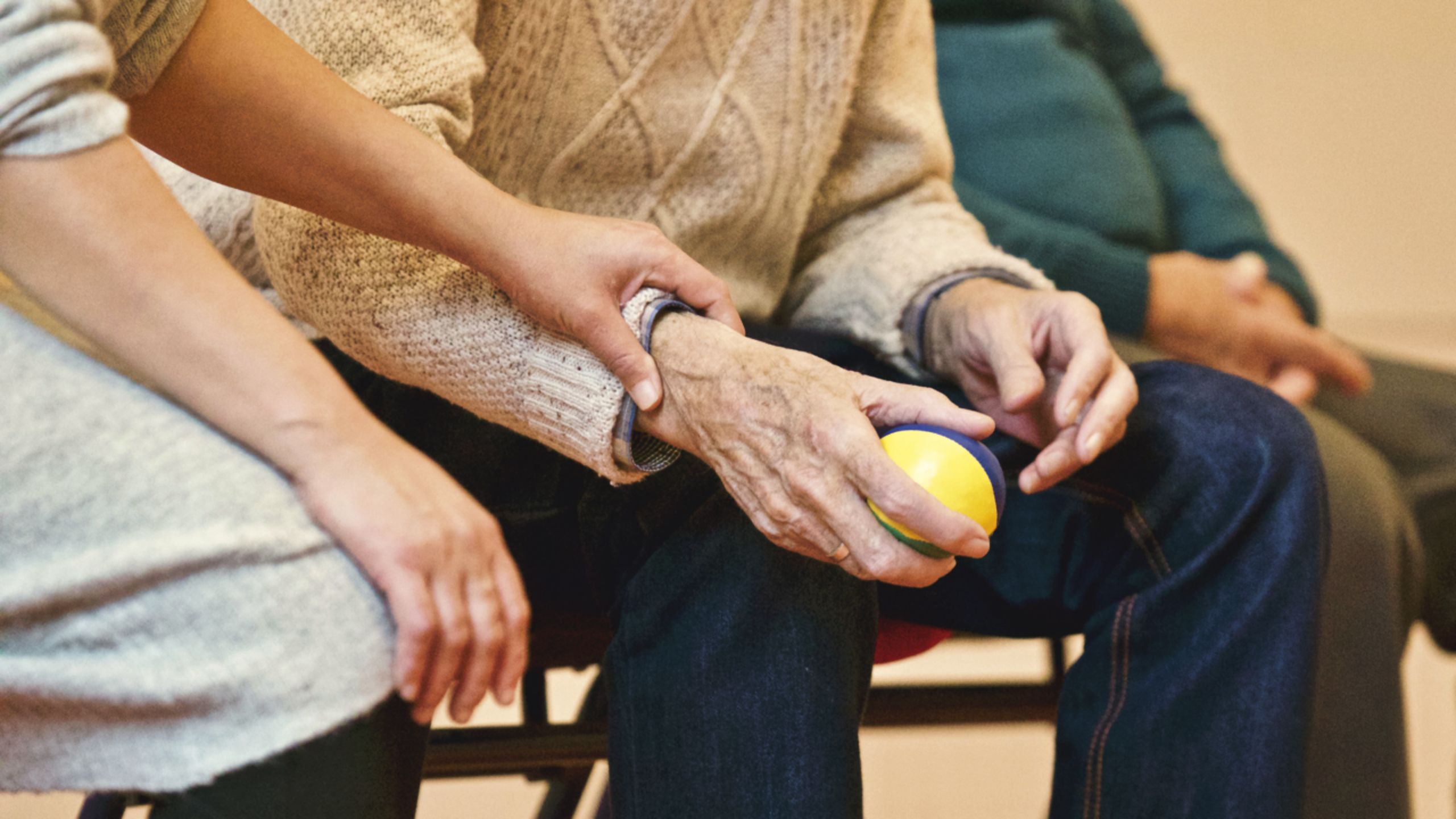
Older people have borne the brunt of deaths from COVID-19, whether in hospital or in care homes. At the same time, the coronavirus emergency sits alongside a crisis in many of the communities in which older people live. Here, Chris Phillipson, Camilla Lewis, Tine Buffel, Patty Doran and Sophie Yarker examine how the pandemic will affect older people living in areas of multiple deprivation.
Where you live matters greatly for your quality of life in older age; it matters also for whether you are protected from COVID-19. The Marmot Review, examining changing health inequalities between 2010-2020, highlighted the increase in deprivation affecting many parts of England. Area deprivation is also associated with higher levels of social exclusion in later life, for example to services, participation in leisure activities, and relationships with friends and family. Quality of life will also be affected by housing conditions – especially important given restrictions imposed by social distancing.
Nearly three-quarters of a million people 75 and over live in what are termed ‘non-decent homes’ – a higher proportion than any other age group. The most common reason is the presence of a serious hazard posing a risk to the occupants’ health or safety, such as inadequate heating or a fall hazard. Over a million over- 55s are living in a home with at least one such problem. It is hardly surprising that the Office for National Statistics (ONS) has reported that those living in the poorest parts of England and Wales are dying at twice the rate from COVID-19 compared with those in more affluent areas.
Figure 2. Deaths in the most deprived areas are considerably higher than in more wealthy neighbourhoods
Double lockdown
As the impact of coronavirus grows, older populations who are social distancing may be doubly locked down – suffering the effects of social isolation whilst living in places affected by substantial cuts to public services. This challenges us to ask fundamental questions about the changing nature of our communities, and the responses necessary to assist older people during the pandemic. With the likely continuation of social distancing rules in some form, the implications for neighbourhood support requires urgent attention. The danger at the present time is that the pressures facing communities are being over- simplified through two competing narratives:
The first portrays a romanticised view of neighbourhoods coming together against a ‘common enemy’, symbolised by the weekly applause for NHS workers, along with the deployment of an army of volunteers stepping forward to support vulnerable groups.
The second highlights reports of outbreaks of unrest caused by the constraints of the lockdown, suspicion of neighbours flouting the guidelines, and selfish behaviour in supermarkets.
It is certainly the case that many social groups have emerged to provide support for those whose isolation has been compounded by COVID-19. In some cases, this builds upon existing voluntary and mutual aid organisations which have replaced services from the local welfare state. But it is important not to ignore evidence about the long-term changes affecting communities. Roughly at the same time as COVID-19 started to spread across the country, the Office of National Statistics (ONS) provided an update on its review of trends in social capital in the UK. The results highlighted significant developments over the past decade, with evidence of less positive engagement with neighbours, less help being given to groups such as older people, and a reduced sense of belonging to the communities in which we live.
The findings from the ONS should not come as a surprise: the last ten years has seen an upsurge in inequalities within and between neighbourhoods in the UK, with zones of affluence and poverty existing side by side. But the majority of attention has focused on growing disparities between income groups, rather than the impact on relationships in everyday life. COVID-19 and measures such as social distancing, will ‘stress test’ the ability of communities to work together to protect vulnerable groups. The pandemic underlines the degree to which social processes relating to inequality, discrimination and racism contribute to the distribution of illness and deaths caused by COVID-19. Social interventions in marginalised communities are now urgently required to strengthen defences against subsequent waves of the virus.
Community development policy
We would argue for a new community development policy to assist the most deprived neighbourhoods in the UK. The policy will need to comprise:
Funding: Disinvestment in social infrastructure has resulted in the closure of libraries, day care and community centres. Such resources are essential for providing informal spaces for people to meet, and both support and empower vulnerable groups. Deep cuts to local authorities over the past decade have resulted in significant financial pressures on all public services. Local authorities suffered a 49.1% real terms reduction in central government funding from 2010 to 2018.
Areas of multiple deprivation must be prioritised in future government spending. Such funding will need to be complemented by a national strategy to tackle health inequalities, drawing on lessons from the Marmot Review, and studies showing the detrimental impact of neighbourhood deprivation on older people’s quality of life. Targeting older people at risk of isolation, by focusing resources on socially excluded places, must be an essential part of the government’s recovery strategy.
Locally based partnerships: Interventions which have the most impact are those designed to meet the specific needs of communities, in situ. A one-size-fits-all approach to community must be rejected, in favour of tailored support to meet the needs of different groups through encouraging dialogue between local residents, voluntary organisations and the public sector.
Local authorities need to give urgent attention to developing new models of neighbourhood working as part of their recovery strategies from the pandemic. Such ways of working will encompass a variety of approaches, for example: advocacy, befriending, counselling, and organising social activities. These types of support have become essential in the current crisis and need to be strengthened over the longer-term. However, given the extent of the crisis affecting communities, a broader range of activities at a neighbourhood level should be encouraged, including: providing food co-ops, home repair services, financial advice, and protecting people from various forms of abuse.
Challenging discrimination: Coronavirus is disproportionally affecting groups based on age, ethnicity, gender, disability, and sexual orientation. Continued social distancing is likely to reinforce ageism and age-based divisions within communities. The number of deaths (direct and indirect) in care homes from COVID-19, and the delay in recognising the extent of the disaster, illustrates the extent of the crisis in social attitudes towards ageing. Older people are increasingly presented as a burden in relation to the economy, pensions and social care – an issue which needs to be tackled at all levels of society.
We support the call from the British Society of Gerontology and the Centre for Ageing Better for a fundamental culture shift to challenge negative attitudes towards older people. Given the risk for greater age segregation occurring as a result of COVID-19, it is essential to foster contact between generations, challenge ageist stereotypes, and highlight the diversity of experiences in later life. We also urge the government to work with national and local equalities organisations to support older people who are facing intersecting pressures relating to ageism, racism, and sexism.
Originally published on 1st June 2020
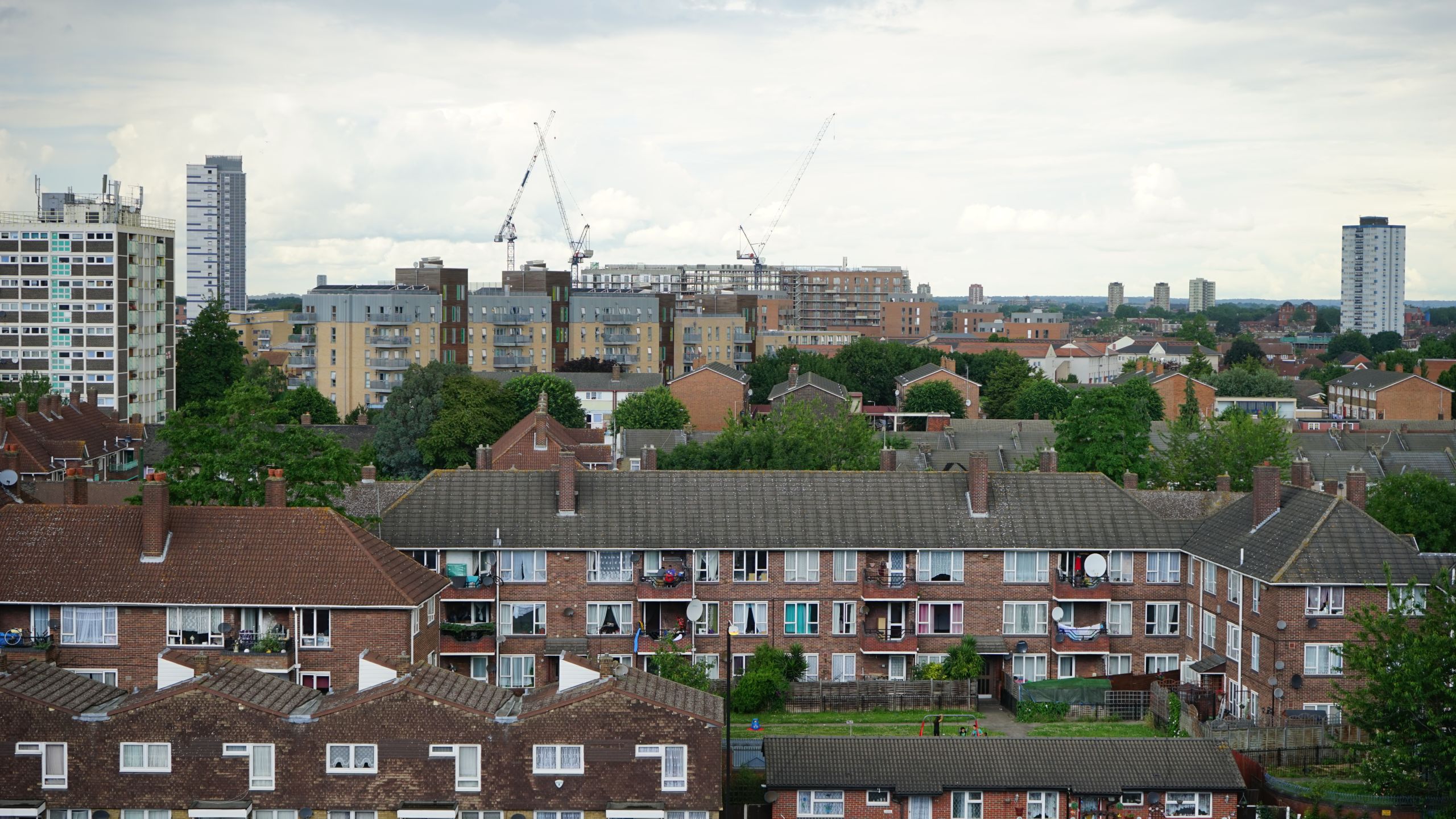

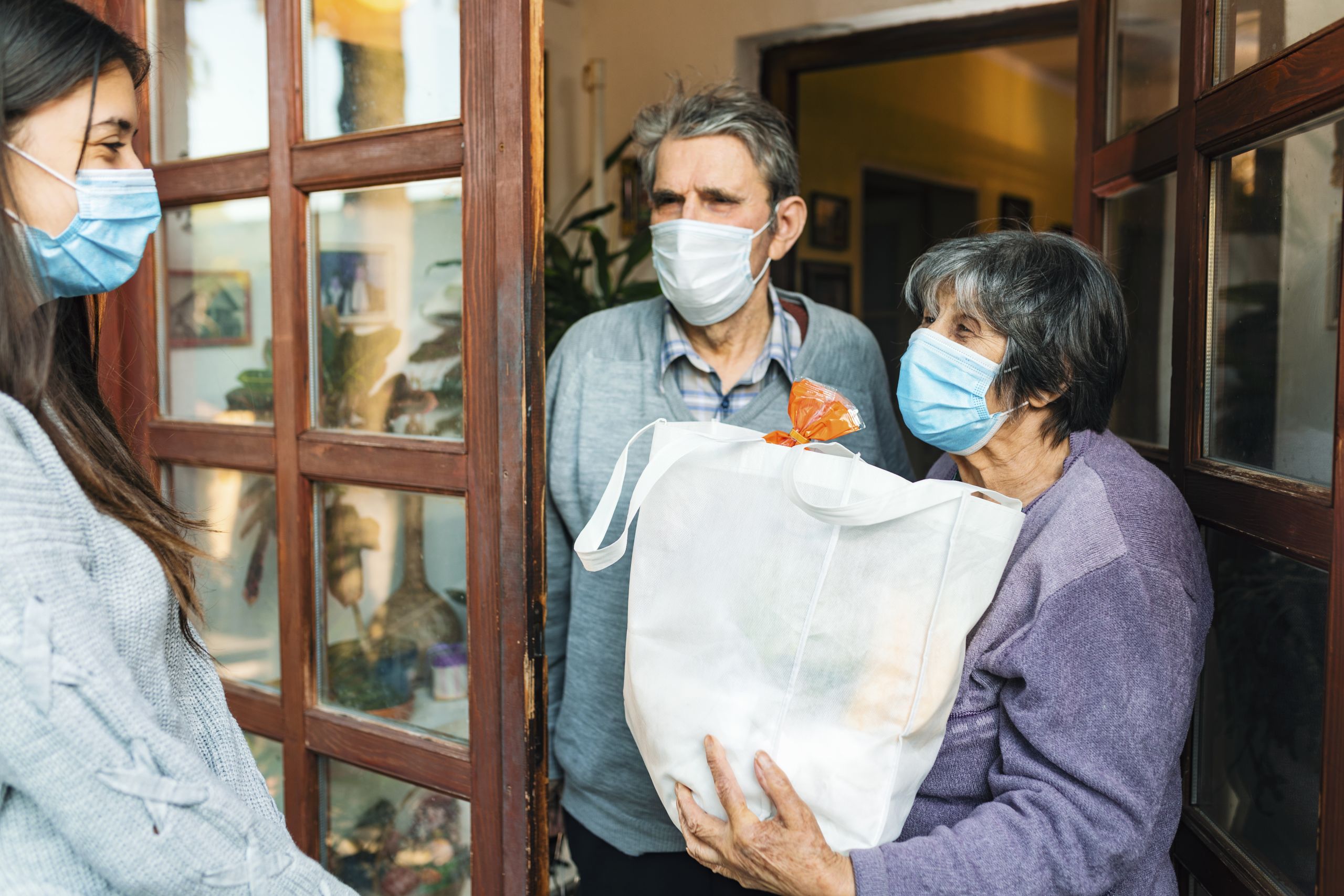
A tale of cities: Local diasporas hold a key to strengthening international outreach
Professor Yaron Matras

The publication of Government guidance on social distancing saw a delay between the release of the English language version and the guidance being provided in different languages. Professor Yaron Matras examines this disparity and suggests a new policy to prevent a similar issue arising in the future.
Amidst the intensity of instructing the public on how to prevent the spread of COVID-19, authorities in the UK have been slow in issuing guidance notes in languages other than English. The matter was raised by Labour MP Afzal Khan, whose Manchester-Gorton constituency is one of the country’s most linguistically diverse. Speaking in the House of Commons on 11 March 2020, he called on the Government to disseminate information in community languages. On 13 March, Doctors of the World UK published translations of NHS information leaflets into 44 languages; at a similar time, the Manchester charity Europia produced video advice in various European languages.
However, it wasn’t until late March that Public Health England added guidance on social distancing for vulnerable people in a number of languages. Meanwhile, Cambridgeshire and Peterborough Councils published video information in 31 different languages, while Liverpool, Manchester and Birmingham were among several local authorities to provide web links to the Doctors of the World translations.
The official UK Government COVID-19 information leaflet was finally published in a small number of languages on 7 April.
A more consistent approach
Authorities in the UK usually translate in order to ensure accessibility of services, or else as a way of regulating behaviour. They target those that are expected to be most liable to violate the rules: leaflets on forced marriage are disseminated in Arabic, Somali and Urdu, for example, while information on angling restrictions appears in Lithuanian, Latvian and Polish. But with COVID-19, the prospect that residents with a low level of English might become carriers of the disease poses a potential risk not just to them but to the entire population. If the UK Government had a domestic language policy in place, the translation of vital information could have been more efficient and consistent. In the absence of such macro-level policy, gaps are currently being filled in a somewhat random way by charities and local authorities.
Discourses around language policy
Over the past few years, especially since the EU referendum in 2016, the public discourse around language policy, to which many researchers have been key contributors, has seen two main strands of argumentation. The first is concerned with counteracting the decline in enrolment in traditional Modern Language courses (like French and German) at secondary schools and higher education. It calls on the government to recognise language skills as a valuable asset to protect British interests abroad, like security and trade. It sees national government agencies as the primary deliverers of this agenda. Some scholars frame it as linked to the mission statement of New Area Studies, seen as the intellectual arm of foreign intelligence gathering and ‘soft power’. Others have tried to capitalise directly on Brexit, cynically arguing that the imminent ‘departure’ of residents who are EU citizens will open up gaps in industries, to be filled by ‘homegrown’ workforce with language skills.
An alternative strand is concerned with language policy as a social justice agenda to promote equality in the domestic arena. It points to the rising uptake of language courses, particularly Arabic and Chinese, as heritage languages in non-statutory education such as supplementary schools, and recognises the importance of cities and local government, and of the intellectual concept of Locality to support heritage language speakers in creating local brands of ‘global diasporas’. In May 2019, Multilingual Manchester sponsored an open event, calling for the formation of a Multilingual Cities Movement that would bring together stakeholders from different sectors, uniting around the realisation that while many nation-states now promote linguistic sameness in an exclusionary way, cities are usually places where languages meet and linguistic plurality and difference are appreciated and celebrated.
Cities have the potential to forge international links. Diaspora communities within cities can play a pivotal role in that process. Global diasporas of today are not temporary emigrants waiting to return to their homelands, but active contributors to global networks of culture and trade. While maintaining links with co-ethnics abroad, they are also engaged in local practices of plurality. If they are allowed to thrive and cultivate their heritage languages, then the localities in which they are settled will be in a better position to be players on the world stage.
A domestic language policy
A coordinated and consistent domestic language policy must firstly acknowledge the UK as a multilingual society. It should take steps to dismantle the hierarchy that currently guides language teaching and which favours the languages of historical imperial European powers. It should recognise the value of heritage languages as skills and encourage the teaching of heritage languages in statutory and higher education, but also support community-based language learning that takes place in the country’s hundreds of supplementary schools. That will also offer a pathway to empower the second and third generations of immigrant background to act as transnational diaspora communities that can build bridges with counterparts in other countries – links that can strengthen diplomacy, investment, and cultural enrichment.
In addition to supporting heritage and skills, a domestic language policy should take steps to regulate the sector of Public Service Interpreting and Translation to ensure high-quality access to services to those with insufficient English language skills.
It also requires modification of key tools to gather accurate data on language use and language skills. For example, currently, the Census asks respondents to indicate their ‘main language’ other than English, but the concept of ‘main’ is vague, and respondents can only choose one single option. Instead, we should be asking about languages that are used in the home, as well as additional language skills. An effort needs to be made to change the public narrative on languages. Last year Boris Johnson, then still candidate for the Tory leadership, demanded that all UK residents should adopt English as their “first language”. We need to move away from such notions of one-sided ‘integration’. Instead, policy should encourage people to maintain language skills and cultural identity, and recognise that multiple identities and multiple languages are an asset for individuals and the country as a whole.
Cities can be active contributors to a new vision of a domestic language policy. A model example is Manchester’s commitment to a City Language Strategy that brings together the contributions of a variety of organisations in the public and community sectors. Strengthening diaspora communities can help them forge city-to-city links worldwide. Policy must ensure that community language needs are met consistently and not left to improvisation in times of crisis.
Originally published 5 May 2020

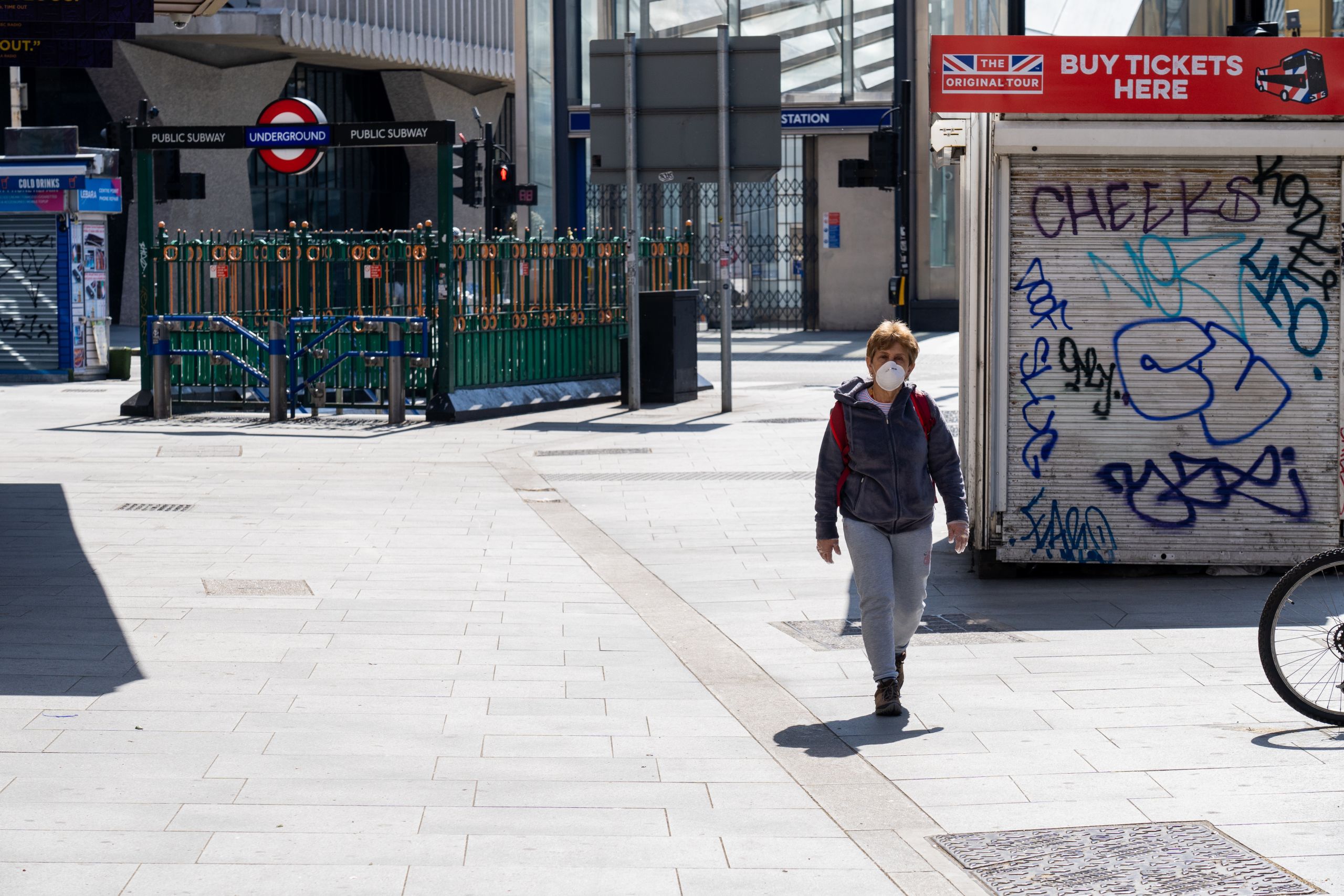

Levelling up regional resilience
Dr Marianne Sensier and Dr Elvira Uyarra

Dr Marianne Sensier and Dr Elvira Uyarra have conducted research comparing the economic resilience, community wellbeing, sustainability and governance of Greater Manchester and Preston in recovery from the 2008 financial crisis. The financial crisis provided a window of opportunity for some places to develop new arrangements to adapt and diversify regional economies. Here, they explore the lessons learnt from the financial crisis that could help in recovery from the COVID-19 crisis.
Regional economic resilience is the capacity of a place’s economy to withstand, recover from and reorganise in the face of market, competitive and environmental shocks. Shocks might be global (the 2008 financial crisis and the 2020 coronavirus pandemic), national (1990s house price crash) or local (closing of a factory) in origin. But what makes a region more resilient?
Academics point to factors such as the concentration of related industries in a local economy, access to knowledge networks and good quality and adaptable institutional and governance structures. In a study on the effect of the 2008 financial crisis on UK regions, we found that those areas with greater shares of: knowledge-intensive and high-tech services, higher-level qualifications, and managers and professionals had higher output, jobs and productivity growth rates in recovery from the financial crisis. We found that the South East of England was the most resilient region to the crisis, while the North East and Yorkshire and Humberside regions were the least resilient along with Northern Ireland.
Regional differences in wellbeing
It is important to understand resilience in not just economic terms but also in terms of wellbeing of citizens and the sustainability of places. In another study, we compared measures of resilience and wellbeing and found that while the City of Manchester scores highly for economic resilience, it ranks the lowest of all the districts of Greater Manchester for inclusive growth in local conditions, with lower rates of healthy life expectancy pulling down this measure. Peripheral districts, like Bolton and Wigan, have been the least resilient, suggesting that policies targeted at dense agglomerations have not benefitted surrounding areas. Preston, in following community wealth-building policies, has had a more equitable recovery and is improving wellbeing for its citizens.
The UK has large regional economic and social disparities and these have widened since the financial crisis. The current government has stressed the need to level up across different regions, which reflects the failure of an overly centralised style of governance and a decade of austerity, which has exacerbated rather than ameliorated inter-regional differences.
Regional resilience to the COVID-19 pandemic
It is fair to assume that those places least economically resilient in the recovery from the 2008 financial crisis will also be least resilient to this current crisis. The uneven economic impact of the pandemic has been analysed by the Centre for Towns and City REDI. Data on consumer spending during lockdown show that rural places that rely heavily on tourism have so far been hardest hit. We assume that as countries gradually emerge from lockdown an adjustment process will ensue to a ‘new normal’ until a vaccine is available. Social distancing measures are likely to continue in some form and this could inflict lasting economic damage. In cities, agglomeration advantages may turn into disadvantages, requiring significant investment to adapt the transport and urban infrastructure (on which agglomeration advantages depend). In this crisis, the consequences of inequality have been laid bare. The COVID-19 pandemic has already been shown to hit poorer areas more. High-density urban areas with high incidence of health inequalities and deprivation such as inner London, Birmingham and Manchester have suffered outbreaks and death rates significantly worse compared to rural areas in England and Wales.
The role of local government
The pandemic has also underlined the importance of local decision-making in times of crisis. In England, government action to respond to the pandemic has been highly centralised, with some resources redistributed by local authorities (grants and business rate relief). Local authorities have been at the forefront of fighting the pandemic, in critical areas such as health, social services and economic development. However, their capacity to react is depleted after years of austerity; and the higher costs of fighting the pandemic and the loss of commercial income is threatening the delivery of essential local services. The limitations of England’s centralised system of governance and lack of a coordinated strategy across levels of government has been evidenced by the UK’s slow testing response compared to other countries such as Germany.
In recovery from the current crisis, the levelling up talk must become a reality. The fact that recently announced central government bailout allocations to local councils in England appears to take no account of deprivation levels is not a good sign. To be meaningful, local and national policy should be directed at regenerating sustainable and equitable regional economies. Resilience is not the same as rebounding – it does not mean returning to the pre-shock state of affairs. As many have argued, the crisis presents a window of opportunity to embrace changes towards a more sustainable and fairer economy. This includes revaluing ‘key workers’ and the foundational economy in which they work. Unlike in the 2008 crisis, government bailouts to rescue specific sectors of the economy such as retail, property or aviation, should come with strong strings attached in terms of environmental, tax and civic responsibility. More collaborative and co-operative approaches are also needed to share the proceeds of growth more equitably.
Having seen the benefits of clearer skies and streets emptied of cars, political leaders in the north of England have suggested lasting improvements such as building cycling and walking networks, boosting internet connections and retrofitting of houses to improve energy efficiency and create jobs. Local industrial strategies should include measures to incentivise green innovation in areas that contribute to sustainable social value in economic recovery. The pledge for increased and geographically better-balanced R&D expenditure is more important than ever, and so is a reversal of years of centralisation and austerity cuts so that councils have greater capacity and revenue funding to plan and react faster and respond to future crisis. We now need bold economic policies to transform how our economy provides for citizens and the planet before this window of opportunity closes.
Originally published 12 May 2020
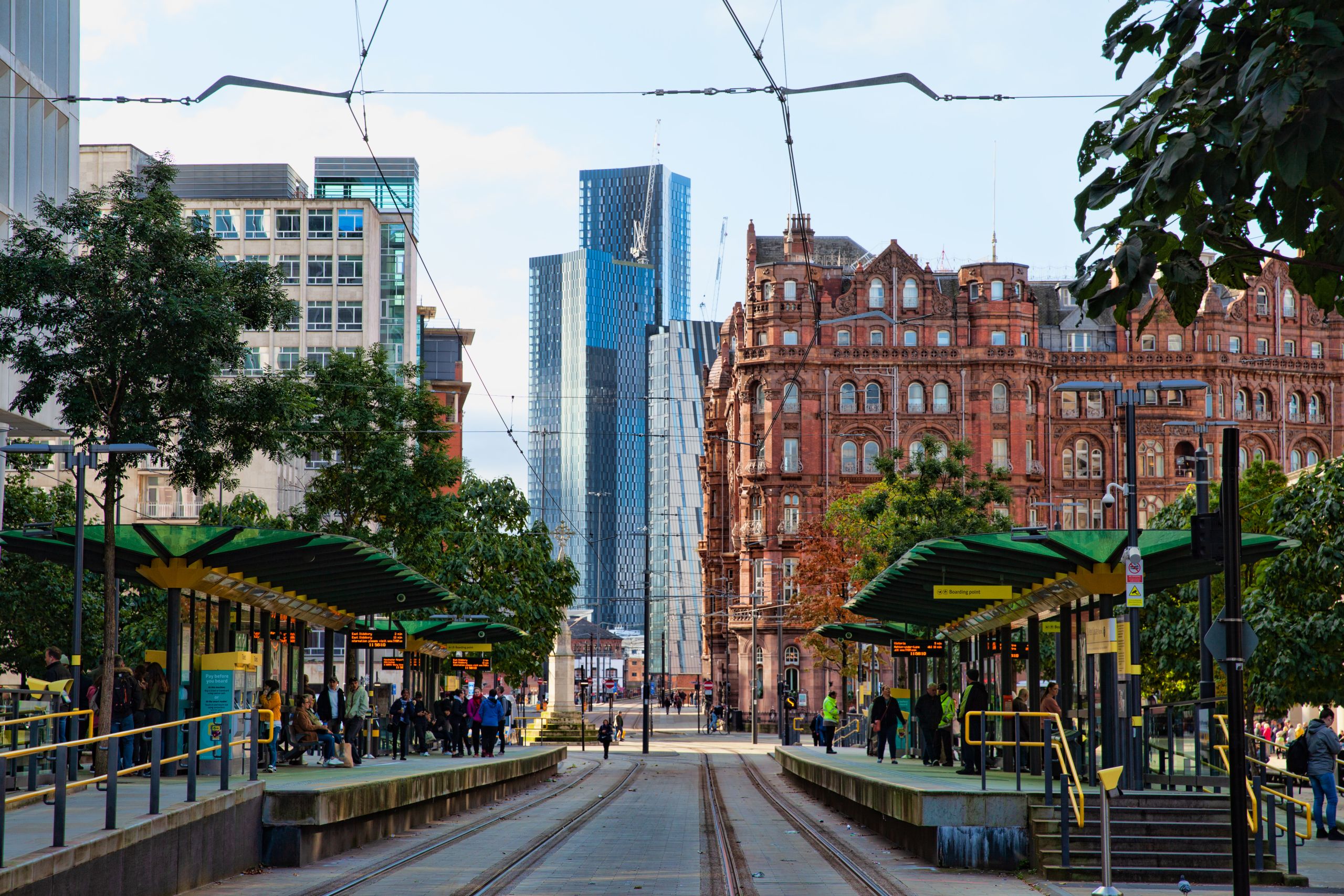


How inequalities are affecting the response to COVID-19
Nasima Begum, Professor Arpana Verma and Dr Bella Starling

In a recent clip widely shared on social media, Newsnight’s Emily Maitlis highlighted the inequalities at the heart of the current COVID-19 emergency, describing it as “a public health issue with huge ramifications for social welfare and a social welfare issue with huge ramifications for public health”. Dr Bella Starling, Professor Arpana Verma and Nasima Begum outline how COVID-19 can disproportionately affect those who are already impacted by social, ethnic and gender inequalities.
Prevalence and risk
Emerging data show that nearly 35% of people who are critically ill with coronavirus are from Black and Asian backgrounds. This is higher than the 13% of the UK population who identify as from Black, Asian and ethnic communities in the last Census. While some factors might explain this higher proportion – for example, COVID-19 has primarily affected urban areas, including local authority wards with large, ethnically diverse populations – based on this current data, Black people are significantly more likely to be critically ill with COVID-19 when taking account of local demography.
Those with ‘underlying health conditions’ have been shown to be at risk of more severe cases of COVID-19. BBC News have reported that nine out of ten COVID-19 deaths recorded by the ONS so far have featured underlying health conditions. In this context, it is imperative to recall that ‘underlying health conditions’ are often associated with those that are already marginalised or living with protected characteristics. For example, diabetes is associated with higher risk of COVID-19. At the same time, people of South Asian origin are up to six times more likely to develop Type 2 diabetes than the general population in the UK. Such correlations may account for some of the greater numbers of hospitalisations being seen in ethnic communities, though further evidence and analyses are required.
There is also increasing evidence of a gendered aspect to COVID-19 risk. Men are more severely affected than women, according to mortality data. In this case, it is important that this disparity, occurring as it does along the lines of a protected characteristic, are taken into account when creating policy responses and the development of clinical practice.
Access to care and treatment
Evidence shows that in some conditions people present differently for care. LGBT communities, for example, are less likely to access healthcare. In cancer, Black, Asian and ethnic communities present later, at a more advanced stage of disease. Awareness and help seeking behaviour is low across all ethnic groups, with the lowest awareness in the Black African group. Access to screening, and the location of COVID-19 screening facilities, is therefore vital and needs to be inclusive of areas where different communities are located.
Great strides have been made in supporting the move to remote healthcare consultations and online interactions during the coronavirus outbreak. However, access to technology is unequal. Those in manual occupations and the unemployed have lower rates of smartphone use: 67% in lower (eg. DE) socioeconomic groups and 86% in higher (eg. AB) socioeconomic groups (in 2018). In addition, little is known about attitudes and acceptance of telehealth methods amongst diverse groups. Take diabetes again, for instance; low participation rates of ethnic diabetes patients have been reported in systematic reviews focusing on telehealth interventions, and the ethnic composition of studies is often unreported.
Workforce(s)
Those in public services and the service industry, who work with large numbers of the general public, are at greater risk of exposure to COVID-19. Their numbers include high rates of Black, Asian, and working class members. According to a recent report, BME individuals account for 21% of all NHS staff; 20% of nursing and support staff and 44% of medical staff. Tragically, as of 22nd April, they also account for 63%, 64% and % of deaths in the same staff groups. In addition, 50% of health and social care workers who have died were born outside the UK, compared to a reported 18% of NHS staff.
The same report highlights that women are in higher numbers in this dataset (contrasting with the dominance of men infected or admitted to intensive care). Taken together, these data might suggest that the burden of, and risks associated with formal care during the outbreak (and perhaps also the burdens of informal care: community volunteering, homeworking and home-schooling) fall more to women, ethnic and migrant groups, reinforcing societal inequalities.
Society and communication
In the early stages of the outbreak, an Ipsos MORI poll showed that casual racism was becoming apparent: 14% of those surveyed would avoid people of Chinese appearance. Should any prejudice arise against those who have had COVID-19 (once testing is more firmly underway), how can we guard against such prejudice being experienced by people with protected characteristics, if COVID-19 incidence remains higher among these groups?
People with limited financial and social resources are more likely to have limited health literacy, and we know that people from different backgrounds and protected characteristics seek health information through a variety of different and culturally specific media. The majority of mainstream health reporting is dominated by White voices, which may be a ‘turn-off’ for some communities seeking information about coronavirus, and social media can often provide incorrect information.
More widely, outside of the regulated systems of NHS patient and professional interactions, the wider move to increased online communication during this pandemic needs to be conscious of accessibility and language, as well as historical and recent targeting of people with protected characteristics online.
Finally, the language around COVID-19 and ‘underlying health conditions’ can be damaging. Language, and all its nuances, has power that goes beyond the speaker. It can guide our thinking and behaviour, providing a backdrop to what might be considered ‘normal’ or acceptable. So, when, probably through no ill-intention, narratives emphasise the serious risk of dying from COVID-19 ‘mainly’ amongst those with ‘underlying health conditions’, these can lead to the consideration that there are members of society who are considered to be more disposable than others. A recent editorial commented how labelling causes stigmatisation and public health should focus on reducing the stigma associated with COVID-19 to “inform immediate and long-term strategies to build empathy and social justice in current and future pandemics”.
Keeping inequalities central to the COVID-19 response
So, in Emily’s words, how do we stop inequalities becoming even starker because of coronavirus? Nationally, research is massively mobilising, including in Greater Manchester.
It is clear that COVID-19 is exacerbated by social inequalities, with marginalised groups often at most risk of contacting the illness and their illness more likely to be severe. Research, policy and practice needs to quickly adapt to this fact, and put social, gender, racial and access inequalities front-and-centre in our response.
With that in mind, we propose the following steps to help in this effort to ensure that we leave no-one behind;
Better understanding of the patient experience of COVID-19 in those with protected characteristics, and investigations into the biological, medical, or sociological factors. NIHR and UKRI have responded to the emerging data with a funding call to explore the association between ethnicity, COVID-19 incidence, and adverse health outcomes. This is to be applauded, demonstrating agility and flexibility in signalling the importance of this research as quickly as possible. Interdisciplinary research could further strengthen the evidence base.
Coronavirus research (including research priorities, planning, design and implementation) must be inclusive of people and patients including those with protected characteristics. NIHR has demonstrated leadership through its commitment to working in partnership in research with patients, communities and the public (public involvement, engagement and participation) during the pandemic in line with the UK Public Involvement Standards.
COVID-19 related research needs to capture as much data as possible so as to be able to carry out subset analyses. There is an important role for ethics committees in ensuring that this can be carried out.
Engagement with COVID-19 and related research, whilst supporting vital public health messages, needs to be imaginative, creative and inclusive in its reach, with appropriate translations as a minimum. Learning from how science communicates and listens to less well heard communities might be helpful here, as is keeping online safeguarding high on the agenda.
Learning from existing good practice that places health inequalities at the heart of translational research. For example,
· The Health Inequalities Steering Group supports the Manchester Biomedical Research Centre and Clinical Research Facilities to be conscious of, and address, health inequalities through its research
· Applying the Health Inequalities Assessment Toolkit to translational research
· Research advisory groups that focus on those with protected characteristics – e.g. The Public Programmes Team’s: Black Asian Minority Ethnic and Refugee research advisory group, Voice Up (Young People’s Research Advisory Group), and Deaf Experts by Experience
· Programmes of work focused on health inequalities including (but not limited to) the Manchester Urban Collaborative on Health, i3HS Hub, Division of Population Health, GM ARC, Health Innovation Manchester, GM Patient Safety Translational Research Centre, the Manchester Biomedical Research Centre and Manchester Clinical Research facility.
Finally, we look forward to the results of the Parliamentary inquiry into COVID-19 impacts on those with protected characteristics, to which we have submitted evidence, and hope that these lessons can be learned in time to mitigate the risks and ensure we leave no-one behind.
Originally published 28 April 2020


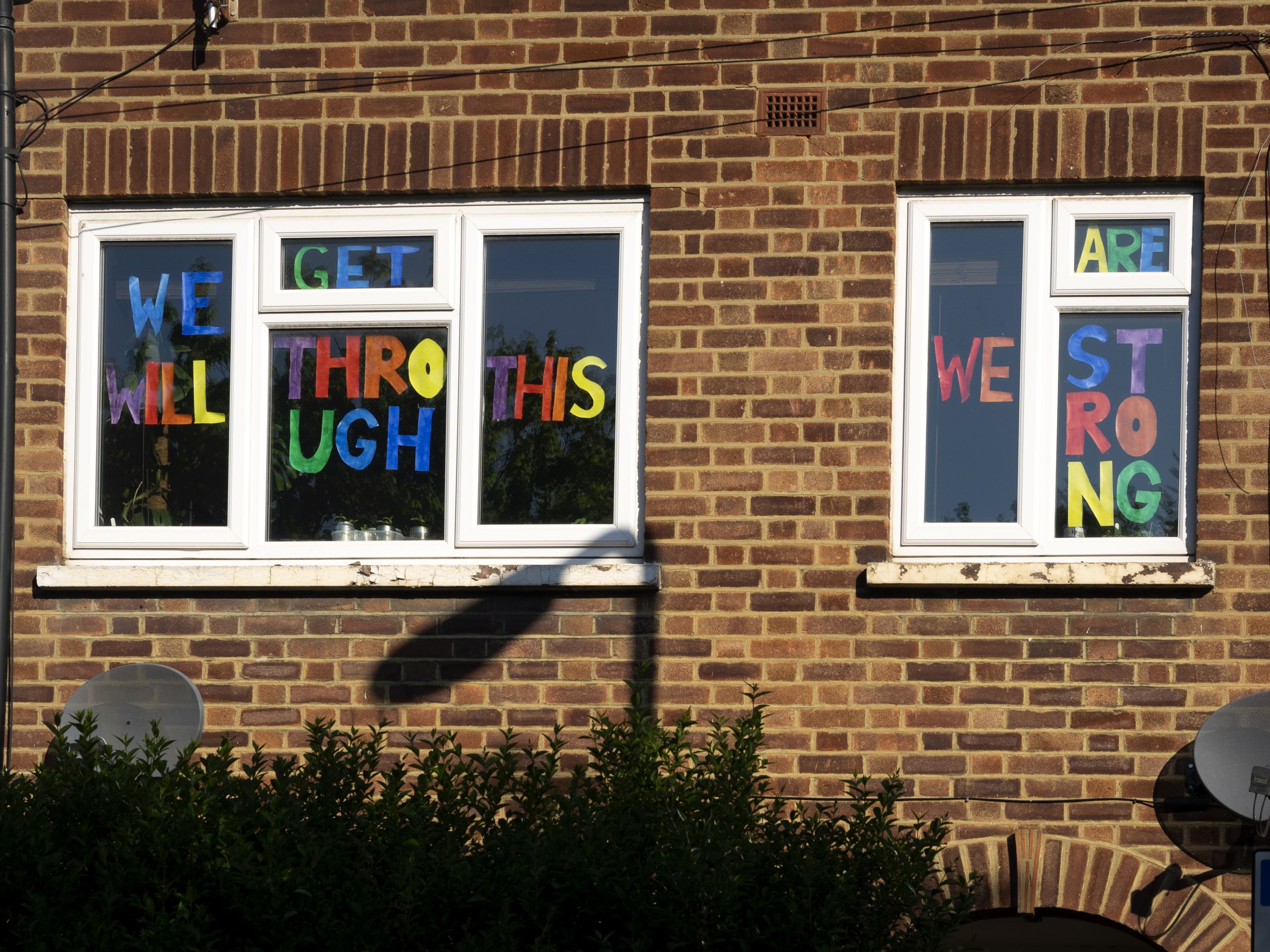
From lives vs. the economy to lives vs. lives: Global South lessons on reframing the lockdown debate
Dr Juan Manuel del Nido

During the weeks of lockdown in the UK, the Government has talked about the balancing act between saving lives and saving the economy. But is it right to talk about these two things as if they are completely separate? Dr Juan Manuel del Nido explores the interdependency between lives and the economy, and how the UK can learn from experiences in Argentina.
The UK’s ruling class has framed the lifting of the lockdown as a balancing act between ‘lives’, a proxy for COVID-19’s strictly organic impact, and ‘the economy’, a proxy for the allegedly purely material consequences of the lockdown. Some among the establishment have attempted to reframe lockdown public debate by insisting that resulting economic destruction will also impact life: internal governmental reports warn up to 150,000 lives could be lost as a consequence of the lockdown itself, due to anything from children going unvaccinated to cancers going undiagnosed. Yet a sort of fundamental division between lives and the economy continues to be taken for granted; recent declarations from members of cabinet that lifting the lockdown too early would jeopardise both ‘lives’ and ‘the economy’ still presume that these are different things that need to be managed jointly. Any insistence on lifting the lockdown takes on a morally toxic tone, an increasingly thorny position since the public revelation of the Office for Budget Responsibility’s report on the catastrophic impact of the lockdown on British life.
Experiences in Argentina
Political, cultural and economic differences aside, and irrespective of the particulars of epidemiological modelling, Argentina’s dealing with the lockdown as a state policy offers a particularly urgent lesson for UK policymakers. Under immense pressure from a near-unified public opinion, on 20 March 2020 Argentina implemented a nationwide lockdown aimed at containing COVID-19. Like elsewhere, Argentine authorities insisted on the imperative to save as many lives as possible at any cost; but that narrative was quickly subsumed under a cross-party, general, vocal and mainstream reframing of the dichotomy of ‘lives vs. the economy’ as one of ‘lives vs. lives’. This was a work done by the ruling political class and it afforded Argentine authorities a political, economic and rhetorical leeway out of the depths of the lockdown – and its popularity.
When Argentina’s economy collapsed in 2001, 25% of national GDP was wiped out virtually overnight. The following years saw a marked increase in suicide rates, strokes and hypertension. Also, in one of the first studies ever of its kind in the world, the Favaloro Foundation and the University of Massachusetts estimate the stress over pauperisation and the destruction of jobs and livelihoods led to an extra 20,000 deaths by heart attack. The Pan-American Health Organisation reports the degradation of public services increased inequalities, child poverty, malnutrition and deaths across all age groups from treatable diseases for years. Argentines intimately know that ‘the economy’ is quite literally about lives, a lesson unique for its magnitude in world history that public policy in the UK would gain to learn from.
Along different lines but with the same purpose, Argentine intellectual Diana Maffía recently made the case that for years now the WHO has considered gender-based violence also a pandemic – one that the lockdown is severely worsening, according to evidence from Argentina and the rest of the world, leading to death and severe and long-lasting mental health issues. Argentine national and provincial governments created ways to except women and children at direct risk of domestic abuse from lockdown rules as a result (as well as residents in the autistic spectrum and other different abilities), but the crucial point here is the success these interventions have in visibilising the lockdown itself as a direct threat to life. Similarly, authorities made a point of drawing attention to the fact that lockdown is exponentially increasing cases of dengue, considerably more serious and deadly than most estimates of COVID-19’s impact. Again, beyond the specifics of diseases which do not exist in the UK, the point is that such approaches help create an urgently needed more complex understanding of the lockdown’s impact to the lives it was set up to save.
Reframing the lockdown conversation
Some of this work is already being done in the UK: earlier this month, the project Counting Dead Women reported that domestic killings have doubled during lockdown in the UK. But Westminster stakeholders are not incorporating these findings in a sustained, public policy exercise of reframing what the lockdown is and what it does to life. Lastly, it is worth noting that the narrative work of reframing the lockdown as a matter of life in Argentina did not hinge on challenging the seriousness of COVID-19, simply on emphasising the threat to life of the lockdown itself, shifting the debate from a simplified either-or take.
These rhetorical strategies are all the more urgent in the UK to prepare public opinion and political debate to the fact that any lifting of the lockdown is likely to be linked to a surge in COVID-19-related deaths. The case to make is the lifting will save lives from the lockdown. Argentine evidence shows that reframing the terms of public debate would allow UK policymakers not just to find the ways to ease the lockdown, but to persuade a population highly in favour of it that neither the moral nor the public health case for it are as straightforward as they seem now.
Originally published 5 May 2020

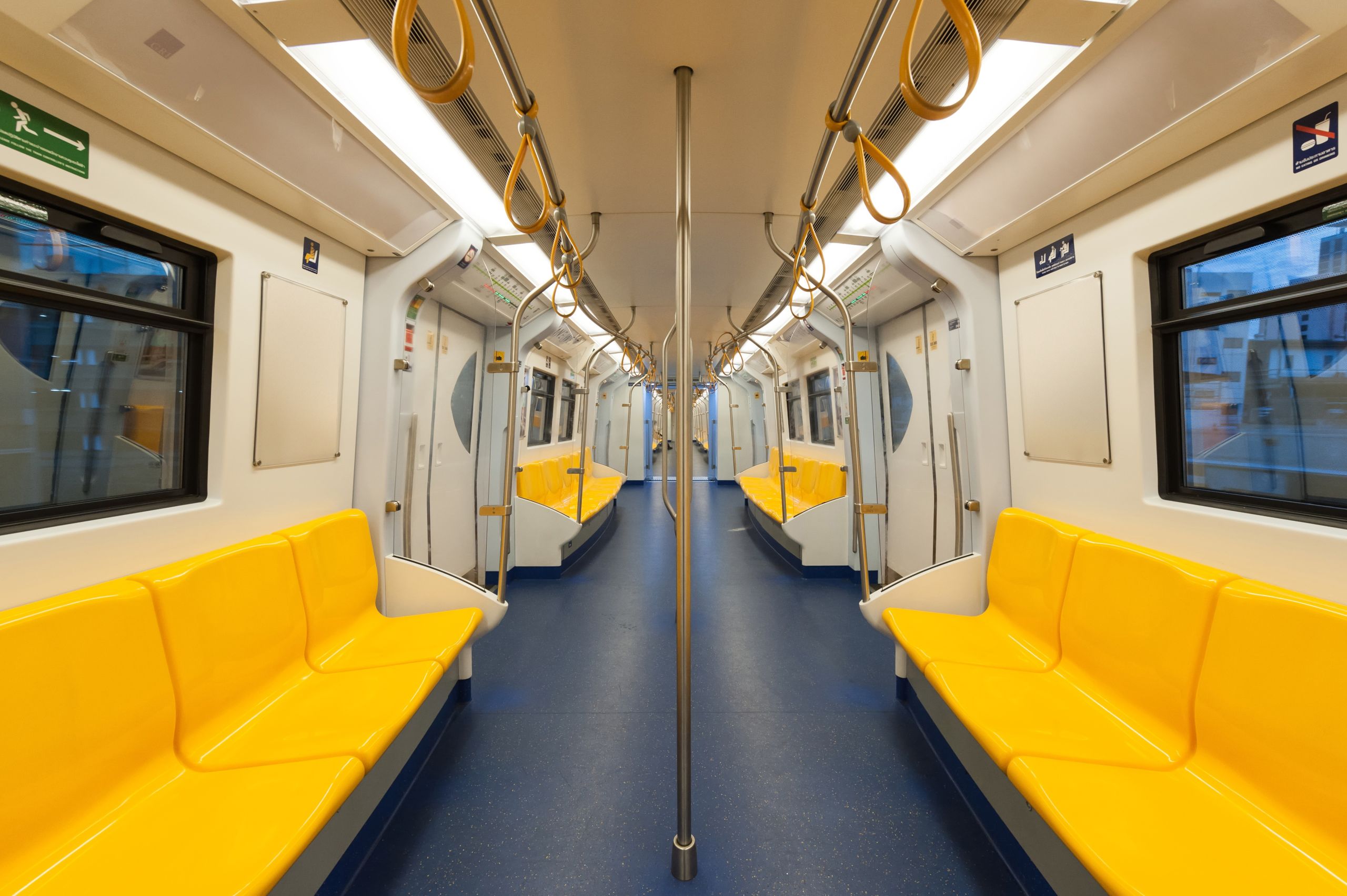
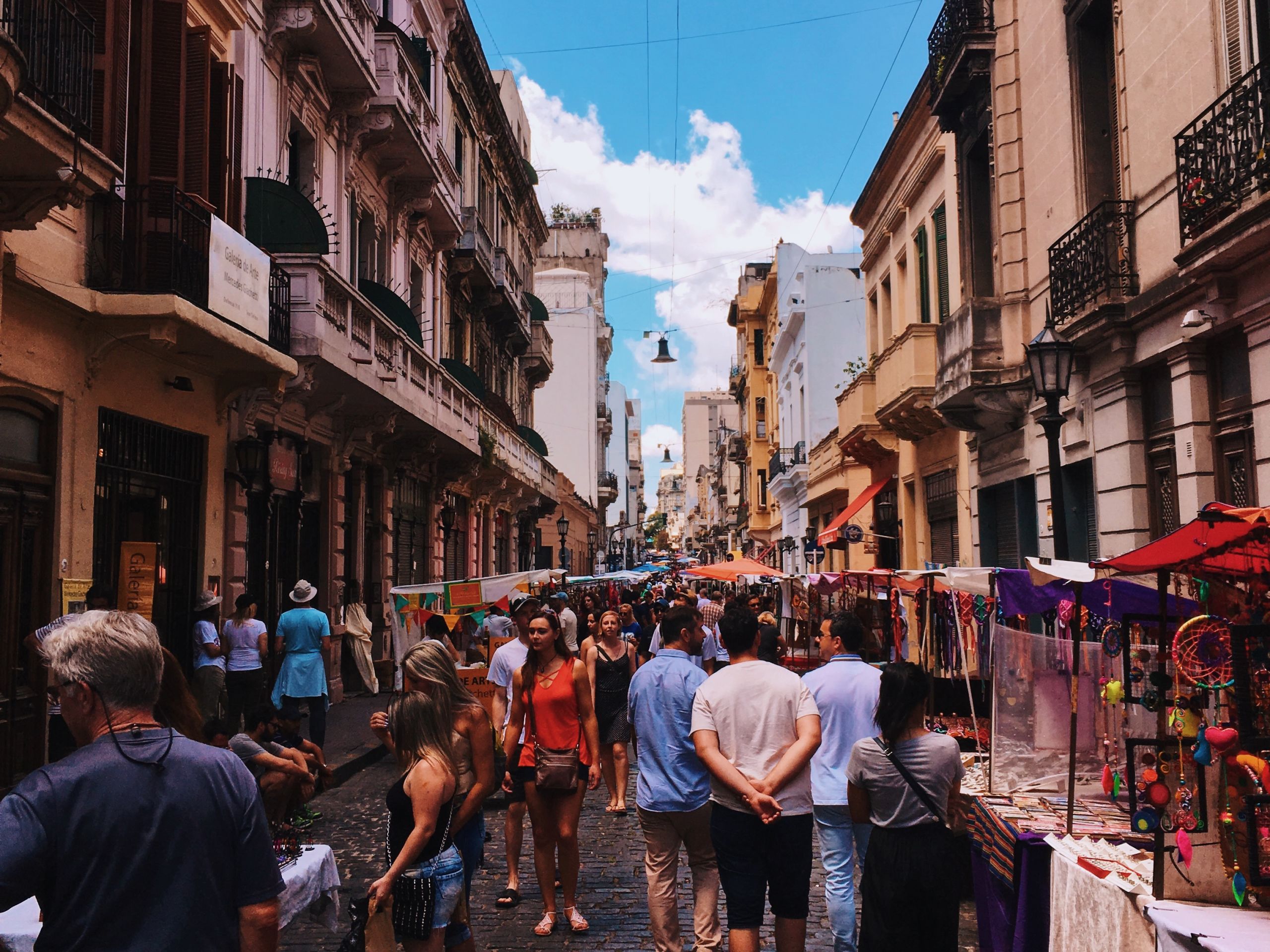
With special thanks to our contributors:
Nasima Begum is a poet, producer and creative practitioner. She is a trustee of Young Identity, Manchester's most exciting collective of writers, musicians and artists who are currently resident artists at HOME. She is currently the Youth Project Coordinator at Ananna, an organisation for women and girls to enable positive change within their community. In her role she works with marginalised young people to access opportunities and reach their potential through creative workshops and 1-1 work. Nasima is also a member of BRAG (BAMER Research Advisory Group).
Tine Buffel is a Senior Lecturer at The University of Manchester, where she directs the Manchester Urban Ageing Research Group (MUARG). She has published widely in the field of ageing, with a particular focus on issues relating to urban change and social exclusion in later life.
Juan Manuel del Nido is a social anthropologist and economist. His research interests include examining how everyday residents understand the political and that which transcends it; and labour and economic relations in Argentina.
Patty Doran is a Research Associate for the UK Data Service based in the Cathie Marsh Institute for Social Research at The University of Manchester. Patty’s research has focused on ageing, inequalities, social support and the life course, and using mixed methods to address complex research questions.
Francesca Gains is a Professor of Public Policy and academic co-director of Policy@Manchester. Before becoming an academic she worked in local government & the probation service, and has both government funded and Parliamentary research experience. She is a Fellow of the Academy of Social Sciences and on the editorial board of the Journal of Public Policy, Local Government Studies and the International Review of Administrative Sciences.
Graham Haughton is Professor of Urban and Environmental Planning at The University of Manchester. Graham's research interests include sustainable urban development, urban regeneration, regional development, and water conflicts.
Mike Hodson is Senior Research Fellow in the Sustainable Consumption Institute. His research focuses on the shape of future sustainable cities and understanding the role of urban infrastructure in this.
Camilla Lewis is a Senior Lecturer in Ageing and Urban Studies at Newcastle University. She joined in July 2019 from The University of Manchester, where she led an ESRC-funded project about ageing in place. She is a social anthropologist interested in interdisciplinary approaches.
Yaron Matras is Professor of Linguistics at The University of Manchester School of Arts, Languages and Cultures. He specialises in the study of multilingual societies and the documentation of various languages including Romani, Kurdish, and Arabic dialects. He is the founder of the Multilingual Manchester research unit.
Andrew McMeekin is Professor of Innovation at Manchester Business School and Research Director of the Sustainable Consumption Institute. Until recently he was co-director of the Economic and Social Research Council (ESRC), Scottish Government and Defra funded Sustainable Practices Research Group (2011-2014). His current research looks at how persistent sustainability problems can be addressed through long-term socio-technical system innovation, especially in energy, mobility and housing.
Chris Phillipson is Professor of Sociology and Social Gerontology in the School of Sciences at The University of Manchester. He has published extensively on issues relating to ageing in cities, and issues relating to the transition from work to retirement.
Nuno Pinto is Lecturer in Urban Planning and Urban Design at The University of Manchester. His research interests focus on the use of quantitative methods in urban planning and their integration in decision-making processes.
Marianne Sensier is a Research Fellow in Economics and the Alliance Business School at The University of Manchester. Marianne’s main research focus is on the application of econometric methods to macroeconomic problems.
Bella Starling is a Wellcome Trust Engagement Fellow and Director of the Public Programmes team at Manchester University NHS Foundation Trust. Her career has spanned neuroscience, genetics and stem cell research, science writing, biomedical ethics, public engagement, patient involvement and science policy, as a practitioner, action researcher, strategic adviser and funder. She is passionate about inclusion in, and democratisation of, research; her Fellowship explores how public engagement with research acts as a catalyst for social change.
Elvira Uyarra is Reader in Innovation Policy and Strategy at the Alliance Manchester Business School and Director of the Manchester Institute of Innovation Research. Elvira is also adjunct professor at the Mohn Center of Innovation and Regional Development at the University of Western Norway and visiting fellow at the Centre for Innovation Management Research (CIMR) of Birkbeck, University of London. She teaches and conducts research on science and innovation policy and management and on regional innovation. She is fellow of the Regional Studies Association (RSA) and Chair of the North West of England branch of the RSA.
Arpana Verma is Head of the Division of Population Health, Health Services Research and Primary Care. She is Director of Manchester Urban Collaboration on Health (MUCH) a WHO Collaborating Centre and honorary Consultant in Public Health at PHE.
Iain White is Professor of Environmental Planning at the University of Waikato. He researches issues connected to the interface between science and decision-making.
Sophie Yarker is a Research Fellow at the Manchester Institute for Collaborative Research on Ageing (MICRA). She has a background in human geography and sociology with research interests in community, belonging and civil society.
The opinions and views expressed in this publication are those of the respective authors and do not necessarily reflect the views of The University of Manchester.
August 2020
The University of Manchester
Oxford Road, Manchester
M13 9PL
www.manchester.ac.uk

